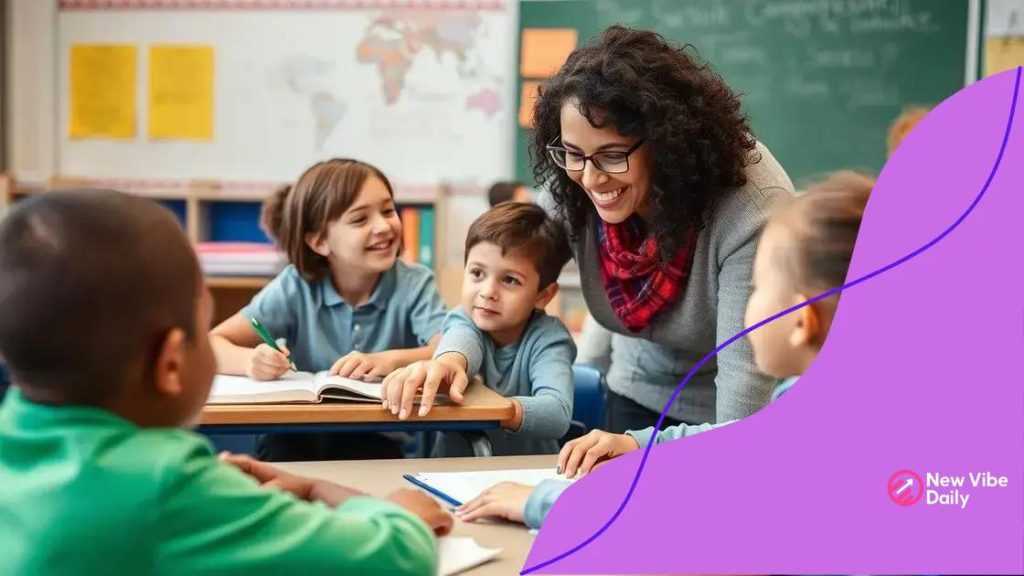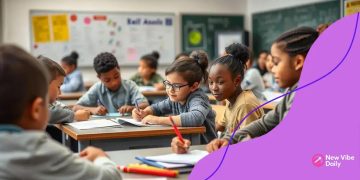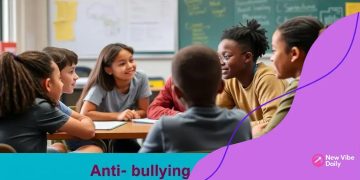Supporting students with dyslexia and other learning differences

Supporting students with dyslexia and other learning differences involves tailored teaching methods, inclusive practices, and active parental involvement, which together promote better educational outcomes and foster a positive learning environment.
Supporting students with dyslexia and other learning differences is crucial for their success in school. How can educators and parents collaborate to make a positive impact? Let’s explore effective strategies that truly help.
Understanding dyslexia and its effects
Understanding dyslexia and its effects is vital for creating supportive educational environments. Dyslexia is a common learning difference that affects many students, making it harder for them to read and write effectively. Recognizing these challenges can lead to better strategies for teaching and learning.
What is Dyslexia?
Dyslexia is not related to intelligence; it stems from differences in brain processing. Students with dyslexia often struggle with:
- Decoding words
- Reading fluency
- Spelling
- Writing
These difficulties can impact their overall academic performance and self-esteem. It’s essential to approach dyslexia with understanding and empathy.
Effects of Dyslexia
The effects of dyslexia extend beyond the classroom. Students may also experience:
- Frustration and anxiety related to reading tasks
- Low confidence in their abilities
- Social challenges with peers
At home, parents can support their children by fostering a positive attitude towards reading. Creating a warm, encouraging environment will help students with dyslexia pursue their interests without fear of failure. They can use various strategies to manage their learning differences and thrive.
In conclusion, understanding dyslexia is the first step to offering support. By acknowledging the unique challenges these students face, educators and parents can create effective learning experiences that empower them.
Effective teaching methods for diverse learners
Effective teaching methods for diverse learners are crucial in ensuring all students thrive in an educational setting. By understanding how each student learns, educators can tailor their approaches to meet varied needs. Diverse learners may include those with learning differences, language barriers, or varying learning styles.
Universal Design for Learning
Universal Design for Learning (UDL) emphasizes flexibility in teaching. It offers multiple means of engagement, representation, and action. Implementing UDL can help:
- Enhance student motivation
- Improve comprehension skills
- Foster independence in learning
Teachers can start by providing resources that address different learning styles. This way, every student can connect with the material.
Active Learning Strategies
Active learning promotes engagement and critical thinking. Using techniques such as group discussions, hands-on activities, and projects can greatly benefit diverse learners. Consider incorporating:
- Interactive simulations
- Peer teaching opportunities
- Problem-solving tasks
These methods encourage collaboration and allow students to learn from each other. They create a rich environment where students feel valued and understood.
To further support diverse learners, it’s essential to build strong relationships. Taking time to understand each student’s background and preferences promotes a positive learning atmosphere. This inclusive approach not only benefits those with learning differences but enhances the educational experience for all students.
Tools and resources for support

Tools and resources for support are essential for helping students with dyslexia and other learning differences succeed in their educational journey. Access to the right materials can make a significant difference in their learning experience, enabling them to overcome challenges.
Assistive Technology
Assistive technology can empower students by providing the necessary tools to aid their learning process. This includes:
- Text-to-speech software, which reads content aloud
- Speech-to-text applications, allowing students to dictate their thoughts
- Digital textbooks with adjustable features for easier reading
These technologies can help students focus on understanding the material rather than getting stuck on the mechanics of reading and writing.
Learning Resources
In addition to technology, various learning resources can support students. Programs specifically designed for dyslexia offer structured approaches. For example:
- Orton-Gillingham method, which emphasizes phonics and multisensory instruction
- Wilson Reading System, designed for students with language-based learning disabilities
- Reading eggs, an interactive platform that makes learning to read fun
These resources can build a strong foundation and improve literacy skills over time.
Moreover, community resources can also play a vital role in supporting students. Local libraries often provide reading programs and workshops tailored for struggling readers. Parents and educators can collaborate to find support groups that offer shared experiences and strategies. This sense of community can significantly benefit both students and their families.
Creating an inclusive classroom environment
Creating an inclusive classroom environment is essential for supporting students with dyslexia and other learning differences. An inclusive space encourages all students to participate and thrive, fostering a sense of belonging.
Physical Classroom Setup
The physical layout of the classroom can significantly impact how students engage. Arrange desks in flexible configurations to facilitate group work and discussions. Ensure that materials are accessible to every student, including:
- Large print and braille versions of textbooks
- Seating options that accommodate different needs
- Visual aids and technology such as interactive smartboards
Creating a welcoming environment means considering the diverse needs of all learners.
Building Relationships
Strong relationships between teachers and students are critical in an inclusive classroom. Teachers should take time to understand each student’s background and learning style. Encourage open communication so students feel comfortable sharing their challenges. Activities like class discussions and group projects promote teamwork and empathy, which are vital for building trust.
Also, incorporating social-emotional learning practices can help students understand their emotions and those of others. This understanding enhances class dynamics and promotes inclusivity.
In addition to these strategies, celebrating diversity in the classroom is key. Using culturally relevant materials and diverse examples in lessons validates students’ identities and experiences. This approach enriches discussions and allows all students to feel seen and heard.
Encouraging parental involvement and advocacy
Encouraging parental involvement and advocacy is essential for supporting students with dyslexia and other learning differences. When parents actively participate in their child’s education, it fosters a collaborative environment that can greatly enhance learning outcomes.
Building Strong Partnerships
Creating strong partnerships between teachers and parents can make a significant difference. Regular communication is key. This can include:
- Scheduling meetings to discuss student progress
- Sending home newsletters with resources and tips
- Offering workshops on understanding dyslexia and supporting learning at home
When parents are informed and equipped, they can advocate effectively for their child’s needs.
Creating Support Networks
Support networks play a vital role in helping parents navigate the educational landscape. Connecting parents with local and online groups fosters a sense of community and shared experiences. These networks provide a platform for:
- Sharing resources, such as books and websites
- Discussing strategies for home support
- Connecting with advocacy groups that focus on learning differences
Through these groups, parents can learn from each other and feel empowered to address challenges collectively. Encouraging advocacy means informing parents about their rights and the available resources in schools.
Engaging parents in their children’s education encourages a holistic approach to learning. This collaboration builds trust and a deeper understanding of each student’s unique needs, allowing for tailored interventions that promote success.
In conclusion, supporting students with dyslexia and other learning differences involves a comprehensive approach. By employing effective teaching methods, utilizing appropriate tools, and fostering a collaborative environment with parents and the community, we can create spaces where all learners thrive. Understanding the unique challenges faced by these students allows educators to tailor their strategies, creating a positive impact on their learning journeys. With continued advocacy and support, we can help every child reach their full potential.
FAQ – Supporting Students with Dyslexia and Other Learning Differences
What is dyslexia and how does it affect learning?
Dyslexia is a learning difference that affects reading and writing skills. It can make decoding words and spelling difficult, impacting academic performance.
How can I support my child with dyslexia at home?
You can support your child by providing a quiet study space, using assistive technology, and encouraging reading by choosing engaging books suited to their interests.
What role does the school play in supporting students with learning differences?
Schools are responsible for identifying learning differences and providing tailored support, such as individualized education plans (IEPs) and access to resources.
How can I get involved as a parent or caregiver?
Get involved by attending school meetings, participating in workshops about learning differences, and joining parent support groups to connect with others facing similar challenges.






